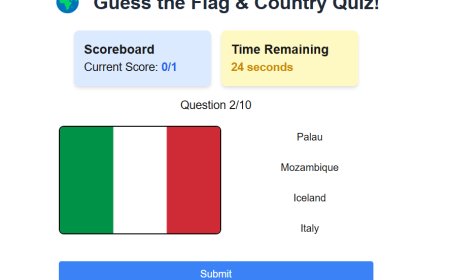Forestry software solutions: everything you need to know
Explore the technologies for forestry software. Everything about their costs, development process, and characteristics.

Forestry software encompasses a variety of digital tools that aid in the sustainable management of forests and timber resources. These tools help streamline essential operations such as inventory management, forest health tracking, timber harvest planning, and regulatory compliance. As the forestry industry grapples with challenges like climate change, biodiversity loss, and the need for sustainable timber production, the adoption of digital solutions has become increasingly vital for both public agencies and private companies. This article explores forestry software solutions, their key features, benefits, development processes, and costs.
What Are Forestry Software Solutions?
Forestry software refers to a suite of digital tools designed to assist forest managers, timber companies, and conservation organizations in optimizing the management of forests and timber resources. These solutions support various functions, including tracking forest inventories, monitoring forest health, planning timber harvests, and ensuring compliance with sustainability certifications like FSC and PEFC. By leveraging technology, forestry software enables data-driven decision-making that enhances both the ecological and economic aspects of forest management.
Forestry software solutions streamline numerous tasks, such as mapping forested areas, monitoring tree health, managing timber resources, and coordinating harvesting schedules. Moreover, these tools help forest managers ensure adherence to sustainability standards, reducing the risk of deforestation and ecosystem degradation.
Types of Forestry Software Solutions
Forestry software solutions cater to a wide range of needs, with various types designed to address specific aspects of forest and timber management. Key categories include:
-
Forest Management Software – These tools help forest managers track inventories, manage resources, and optimize timber yields. Many systems incorporate Geographic Information Systems (GIS) for enhanced mapping and monitoring capabilities.
-
Timber Management Software – Focused on optimizing the supply chain, these platforms allow users to plan and monitor timber harvests, transportation, and market conditions, increasing efficiency and reducing operational costs.
-
Tree Management Software – Primarily used in urban forestry or smaller-scale operations, this software helps manage tree inventories, health, and growth. It's ideal for managing public parks, municipal forestry projects, and private land.
-
Forest Monitoring Software – Utilizing satellite imagery, drones, and remote sensors, these tools help track forest health, growth rates, and potential threats such as pests or diseases.
-
Sustainability and Certification Software – These specialized platforms assist forest managers in ensuring compliance with environmental regulations and sustainability certifications, facilitating easier access to competitive timber markets.
Benefits of Implementing Forestry Software
The adoption of forestry software offers a multitude of advantages, from improved operational efficiency to enhanced forest sustainability. Key benefits include:
-
Precision Forestry – Forestry software, through tools like drones and LiDAR, promotes precision in operations by providing accurate data for planning and management. This marks a shift from traditional methods to more controlled, data-driven approaches.
-
Sustainability – By monitoring ecosystems more effectively, forestry software reduces deforestation risks and promotes the sustainable use of resources, optimizing land and water usage for tree growth.
-
Cost Savings – Automating processes like data collection, forest mapping, and compliance tracking helps reduce labor costs and minimize human error, resulting in significant cost savings.
-
Increased Timber Yields – Timber management software helps optimize harvest schedules, allowing forest managers to track market trends and maximize profitability by ensuring that timber is processed and sold at the most favorable times.
-
Data-Driven Decision-Making – Real-time data provided by forestry software leads to better-informed decisions regarding forest health, harvesting schedules, and long-term management strategies.
Key Features of Forestry Software
Forestry software is equipped with powerful features that streamline forest management and enhance sustainability efforts. Some essential features include:
-
Inventory and Asset Management – This core feature allows forest managers to track tree inventories, species, growth rates, and timber stocks. It also helps manage equipment and other critical assets, optimizing usage and reducing maintenance costs.
-
Mapping and GIS Integration – GIS integration offers advanced mapping and spatial analysis capabilities, helping managers visualize forest areas, track land use changes, and plan harvests with precision.
-
Forest Health Monitoring – Forestry software uses remote sensing, drones, and satellite data to monitor key indicators such as tree growth, pest infestations, and disease outbreaks, helping managers take proactive measures.
-
Reporting and Analytics – The software offers customizable reporting tools that track key metrics like timber yields, forest health, and resource allocation, providing actionable insights for better decision-making.
-
Cloud-Based and Mobile Access – Cloud-based solutions enable real-time data access and collaboration, while mobile access allows field teams to collect data and update records from remote locations, improving efficiency.
Forest Monitoring with Forestry Software
Forest monitoring is a continuous process that involves tracking forest conditions to assess tree health, growth patterns, and overall ecosystem well-being. Forestry software plays a pivotal role by leveraging data from satellites, drones, sensors, and on-the-ground inspections. These tools provide forest managers with a comprehensive understanding of forest health, enabling them to detect issues early and implement necessary interventions to ensure long-term sustainability.
Enhancing Sustainability through Monitoring
Forest monitoring is essential for promoting sustainability. By consistently tracking forest conditions, managers can identify areas at risk of deforestation or resource depletion and implement reforestation programs as needed. Sustainability certifications often require detailed monitoring to ensure compliance with environmental standards, and forestry software automates the reporting processes, ensuring sustainable management practices are upheld.
Tree Management Software
Tree management software is a specialized tool used in both urban and commercial forestry operations to manage tree health, inventory, and maintenance. This software is valuable for tracking the growth, health, and condition of trees, whether in parks, public spaces, or large-scale commercial forests.
Key features of tree management software include tree inventory tracking, health monitoring, growth analysis, and maintenance scheduling. With GIS integration, users can visualize tree populations and manage them more effectively across various locations.
Timber Management Software
Timber management software supports the entire timber production process, from forest inventory to final sale. These platforms help optimize harvesting operations, manage resources more effectively, and ensure compliance with sustainability standards.
-
Harvest Planning and Management – Timber management software assists in planning harvests by analyzing inventories, growth rates, and market trends.
-
Timber Inventory Tracking – This feature provides real-time data on available timber resources, helping forest managers optimize timber yields.
-
Compliance and Certification Management – Timber management systems track compliance with certifications like FSC and PEFC, ensuring that timber production adheres to environmental standards.
Development of Custom Forestry Software
When off-the-shelf solutions do not meet specific operational needs, custom forestry software can be developed. Custom software allows for the creation of tailored features, integration with existing systems, and solutions to unique challenges.
Steps Involved in Custom Software Development
The process of developing custom forestry software typically includes:
- Requirements Analysis – Identifying specific operational needs and goals.
- Design and Prototyping – Creating wireframes and user interfaces.
- Development – Building the software with tailored features.
- Testing – Ensuring performance and security standards are met.
- Deployment – Launching and integrating the software into operations.
- Maintenance – Ongoing support and updates.
Costs and Timeframes for Development
Custom forestry software development typically takes between six to twelve months and can range in cost from $50,000 to $500,000 depending on complexity. Ongoing maintenance generally requires 15-20% of the initial development cost annually.
Price Ranges for Off-the-Shelf Software
Off-the-shelf forestry software solutions range from $1,000 to $50,000, depending on the scope and scalability of the software. Many providers offer subscription models with monthly fees ranging from $100 to $1,000 per user, while others may charge a one-time purchase fee for perpetual access.
Conclusion
Forestry software is critical for modernizing forest management, improving sustainability, and optimizing timber production. Whether choosing off-the-shelf solutions or investing in custom software development, forestry operations stand to benefit from enhanced efficiency, better data insights, and more sustainable practices.
What's Your Reaction?
 Like
0
Like
0
 Dislike
0
Dislike
0
 Love
0
Love
0
 Funny
0
Funny
0
 Angry
0
Angry
0
 Sad
0
Sad
0
 Wow
0
Wow
0





















































:strip_icc():format(webp)/kly-media-production/medias/5082523/original/082651200_1736234619-patrick.jpg)




















































